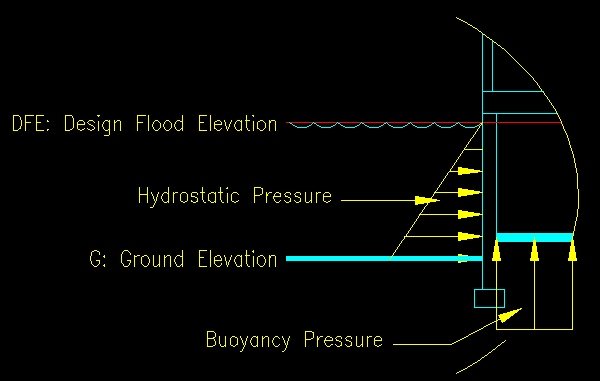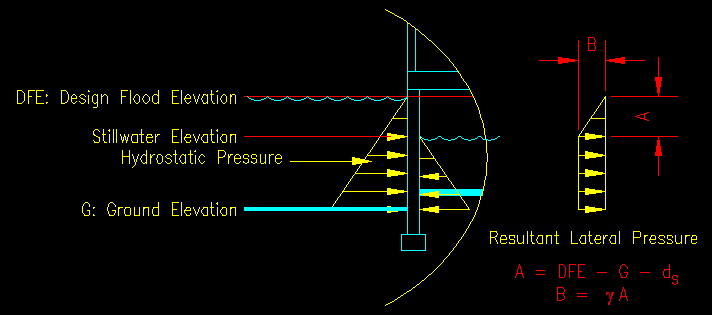| Overview |
| Definitions |
| Hydrostatic Loads |
| Hydrodynamic Loads |
| Breaking Wave Loads |
| Impact Loads |
| Example Problems |
|
References |
| Report Errors or Make Suggestions |
Section 6.3
Hydrostatic Loads
Last Revised: 11/04/2014
The pressure at any depth due to hydrostatic pressures is found using the equation for hydrostatic pressure presented in earlier courses:
p = g h
Where:
- g = 62.4 pcf for water
- h = water depth at point of interest.
ASCE 7-05 5.4.2 states that this pressure will be determined from the Design Flood Elevation, DFE. Buoyancy pressure on horizontal surfaces must also be considered since the ground is saturated. Figure 6.3.1 shows the pressures on a wall that without water behind it.
Figure 6.3.1
Hydrostatic Loading on Waterproof Wall

In cases where the space behind the wall is likely to be flooded (i.e. there are specific provisions in the design to allow water to accumulate behind the wall) the water level behind the wall is taken as the still water elevation. The resulting pressure distribution is shown in Figure 6.3.2. Notice the lack of buoyancy pressure.
Figure 6.3.2
Hydrostatic Pressure On Wall With Water Behind It
